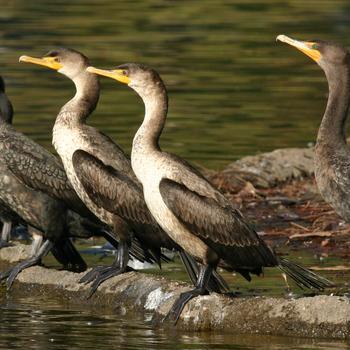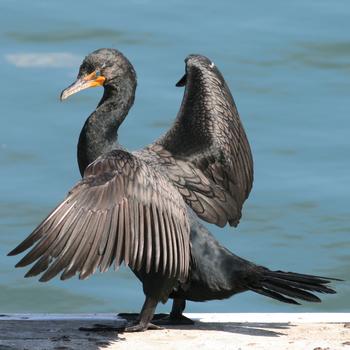Double-crested Cormorant (Phalacrocorax auritus)

Double-crested Cormorant, immature - Yorba Linda, CA
© Tom Benson

Double-crested Cormorant, adult - Oceanside, CA
© Tom Benson
The Double-crested Cormorant is a casual visitor to campus with the occasional individual or flock (high count: 235) seen flying over campus. It is a common breeding resident in southern California, and can be found on most lakes that contain fish.
The adult Double-crested Cormorant can be identified by its dark brown plumage, yellow-orange bill and facial skin, and green eye. Immatures are similar to adults but have a paler brown head and upperparts and whitish underparts. After feeding (they dive for fish) cormorants will stand with their wings spread out to dry because they lack the oil glands necessary to waterproof their feathers.